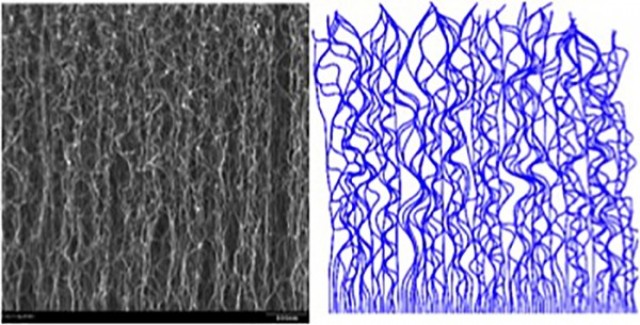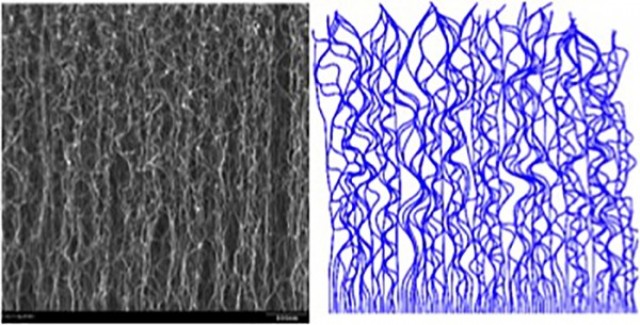Matt Maschmann, a researcher at the University of Missouri (MU), has developed a method to predict the way in which carbon nanotubes (CNTs) are formed. Maschmann is an assistant professor of mechanical and aerospace engineering in MU’s College of Engineering.


In this study, a method was developed for predicting the manner in which the CNTs with complicated structures are formed. CNTs are highly adaptable, and this would enable engineers to add this material into a wide range of products, including combat body armor, aerospace wiring, baseball bats, micro sensors for biomedical applications, and computer logic components.
When CNTs are created in huge numbers they naturally form “forests”. The van der Waals force, which is a nanoscale adhesive force, holds these forests together. These forests are categorized based on their alignment or their rigidity. When CNTs are well aligned and dense, the resulting material has a tendency to be rigid, which would make it useful for mechanical and electrical applications. When the CNTs are disorganized, they are comparatively softer, and possess completely different types of properties.
“Scientists are still learning how carbon nanotube arrays form,” said Matt Maschmann, assistant professor of mechanical and aerospace engineering in the College of Engineering at MU. “As they grow in relatively dense populations, mechanical forces combine them into vertically oriented assemblies known as forests or arrays. The complex structures they form help dictate the properties the CNT forests possess. We’re working to identify the mechanisms behind how those forests form, how to control their formation and thus dictate future uses for CNTs.”
Most current studies on CNT forests focus on their properties after they have formed. Studies have been done to find out what happens when CNT forests are compressed, especially to their conductive and thermal properties. Most models do not consider the process involved in creating the forest and the difficulties faced while attempting to capture a CNT forest structure as realistically as possible.
The work done in Maschmann’s lab will assist scientists in understanding the process involved and would also allow them to control the process. Engineers would be able to create nanotube forests that possess the required mechanical, electrical and thermal properties. Modeling can be used for mapping the growth of nanotubes into specific types of forests and then tests can be conducted on their resulting properties.
“The advantage of this approach is that we can map how different synthesis parameters, such as temperature and catalyst particle size, influence how nanotubes form while simultaneously testing the resulting CNT forests for how they will behave in one comprehensive simulation,”Maschmann said. “I am very encouraged that the model successfully predicts how they are formed and their mechanical behaviors. Knowing how nanotubes are organized and behave will help engineers better integrate CNTs in practical, everyday applications.”
The study, titled “Integrated simulation of active carbon nanotube forest growth and mechanical compression,” is to be published in the journal Carbon.

